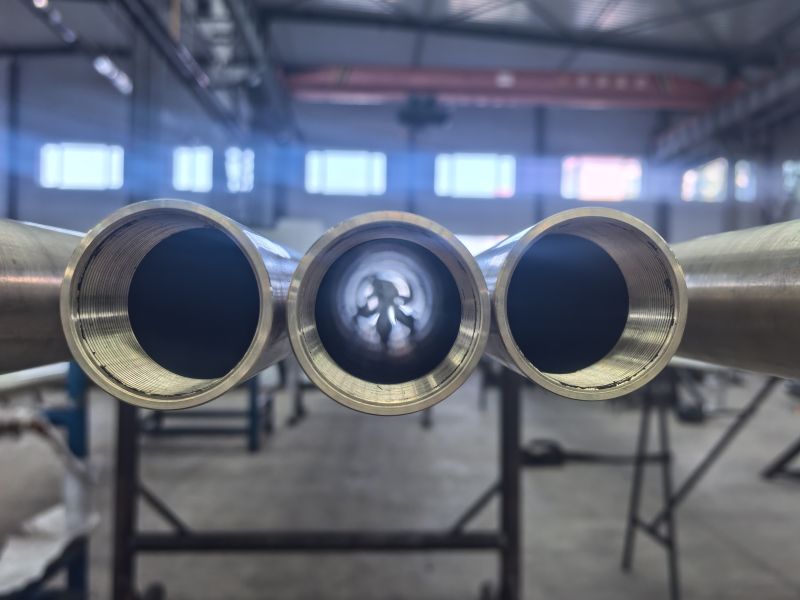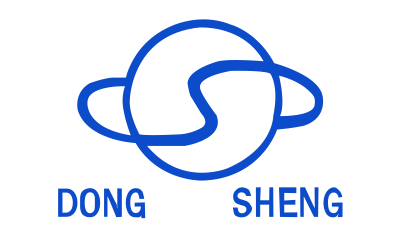I. The Crucial Role of Rod Pump Barrels in the Oil Extraction Industry
Oil, as a vital resource for global economic development, has long held a pivotal position in the energy structure. Whether in transportation, chemical raw materials, or power generation, oil and its derivatives remain an indispensable energy source for modern society. Despite the rapid development of new energy technologies, oil extraction will continue to be a crucial pillar of global energy supply in the foreseeable future.
In the oil production process, the performance of oil extraction equipment directly determines well output and economic benefits. Among these, the Sucker Rod Pump System, with its simple structure, strong adaptability, and convenient maintenance, has become one of the most widely used mechanical oil extraction methods in global onshore oilfields. Within this system, the rod pump barrel, as a key pressure-bearing component, undertakes the important tasks of liquid lifting, sealing, and guidance, and is the core of the stable operation of the entire pumping system.
Dongsheng Petroleum Machinery Co., Ltd., as a professional oil machinery equipment manufacturer in China, has been deeply involved in the pump barrel field for many years, continuously promoting innovation and upgrading in pump barrel structural design, material processes, and wear-resistant and corrosion-resistant performance, providing efficient and reliable pumping solutions for oilfield customers worldwide.
II. Definition and Structural Composition of a Rod Pump Barrel
1. Basic Definition of a Rod Pump Barrel
A rod pump barrel is a cylindrical metal component installed in a downhole rod-type oil pump. It typically works in conjunction with a plunger, using reciprocating motion to lift and discharge liquid. It is not only a sealed cavity for fluid lifting but also the main pressure-bearing component of the system.
Functionally, the pump barrel acts as the "heart" of the pumping system, determining the efficiency, stability, and sealing reliability during the crude oil lifting process.
2. Main Components of a Rod Pump Barrel
A typical rod pump barrel consists of the following key components:
Barrel Body: Generally made of high-strength alloy steel or stainless steel, with a high-precision ground and coated inner surface for good fit and wear resistance.
Plunger: Moves up and down inside the pump barrel, controlling fluid intake and discharge through valve opening and closing.
Standing Valve & Traveling Valve: Control the direction of liquid flow, ensuring unidirectional upward movement of crude oil.
Couplings: Used to connect the pump barrel and sucker rod string, ensuring the mechanical stability of the system.
Sealing Components: Prevent high-pressure fluid backflow and leakage, ensuring long-term downhole operational safety.
3. Dimensions and Matching Requirements The pump barrel's inner diameter, length, and the clearance between it and the plunger are key parameters determining performance. Typically, the clearance between the pump barrel and the plunger needs to be controlled within tens of micrometers to balance sealing performance and maneuverability. Dongsheng Petroleum Machinery Co., Ltd. uses high-precision grinding and testing equipment in its manufacturing process, and dimensional tolerances are controlled within the international API standard range.
III. Working Principle and Energy Transfer Mechanism of Rod Pump Barrel
1.Fluid Lifting Mechanism
The operation of a rod pump system relies on the reciprocating motion of the surface pumping unit. The surface drive unit transmits power through the sucker rod string, causing the plunger to move up and down within the pump barrel. When the plunger rises, the stationary valve closes and the traveling valve opens, allowing fluid to enter the plunger chamber. When the plunger descends, the traveling valve closes and the stationary valve opens, pushing the fluid to the upper pipeline for continuous oil pumping.
This cycle continues, ultimately delivering the downhole crude oil continuously to the surface storage tank.
2. Energy Conversion and Efficiency Impact
In the energy transfer chain, the rod pump barrel bears the responsibility of fluid pressure and sealing. Its inner wall smoothness, fit precision, and friction coefficient directly affect energy loss. Dongsheng Petroleum Machinery Co., Ltd. has effectively reduced frictional resistance and improved pumping efficiency by improving the thickness and surface hardness of the chromium plating layer on the inner surface of the pump barrel.
3. Fluid Characteristics and Adaptability
The characteristics of crude oil from different oil wells vary significantly, including high-viscosity heavy oil, sand-containing crude oil, high-sulfur or corrosive fluids, etc. Dongsheng Company has developed several adaptable pump barrels for different operating conditions:
High wear-resistant pump barrels: suitable for sand-bearing oil wells;
Corrosion-resistant pump barrels: made of nickel-based alloys or stainless steel;
High-temperature pump barrels: suitable for well areas with formation temperatures exceeding 120℃.
IV. Pump Barrel Material and Manufacturing Process Analysis
1. The Importance of Material Selection
The core of a high-quality pump barrel lies in its material. Commonly used materials include alloy steel (such as 20CrMo, 40CrNi), stainless steel (304, 316L), and chrome-plated composite materials. Materials must possess the following characteristics:
High strength and tensile strength;
Excellent wear resistance;
Outstanding corrosion resistance and hydrogen sulfide resistance;
Stable coefficient of thermal expansion.
2. Surface Treatment Process
Dongsheng Petroleum Machinery Co., Ltd. employs multiple surface strengthening processes, including:
High-precision internal hole grinding: improving inner wall smoothness and reducing friction;
Chromium plating: forming a high-hardness, wear-resistant layer;
Phosphating and nitriding processes: enhancing corrosion resistance;
Ultrasonic testing and magnetic particle inspection: ensuring the absence of cracks and defects.
3. Precision Control and Testing Standards
The company strictly adheres to API Spec 11AX standards, using imported testing instruments to conduct full inspections of the pump barrel's roundness, roughness, and hardness, ensuring that every product meets international oilfield equipment standards.
V. Performance Comparison with Other Pumping Methods
Although electric submersible pumps (ESPs) and screw pumps (PCPs) perform well in certain well conditions, rod pump systems still dominate in most shallow and medium-yield wells.
Project: Rod Pump System, ESP System, Screw Pump System
Applicable Well Depth: Shallow to Medium Wells, Deep Wells, Ultra-Deep Wells, Shallow to Medium Wells
Energy Consumption: Low, High, Medium
Maintenance Cost: Low, High, Medium-High
Reliability: High, Medium, Medium
Suitable Oil Quality: Various Fluids, Clean Crude Oil, Heavy Oil
Service Life: Long, Medium, Medium
Therefore, from the perspective of economy and ease of maintenance, rod pump systems using high-quality rod pump barrelsremain the preferred choice for oilfields worldwide.

VI. Typical Applications and Adaptable Environments
Drone pump barrels, with their excellent mechanical properties and structural stability, excel in the following operating conditions:
Deep and Ultra-Deep Well Production: Possesses high strength and pressure resistance, capable of withstanding enormous downhole loads.
High Sand Content Wells: Effectively prevents wear through hard alloy coating.
Heavy Oil and High Viscosity Crude Oil: Maintains fluid sealing and high pumping efficiency.
High Corrosive Well Areas: Utilizes corrosion-resistant alloy materials to resist hydrogen sulfide and carbon dioxide corrosion.
High-temperature and high-pressure environment: ensuring structural stability and dimensional accuracy.
Dongsheng Petroleum Machinery Co., Ltd. has accumulated numerous successful cases in oilfields across various countries. Our products are widely used in the Middle East, Russia, North America, and Southeast Asia, and are highly recognized by international customers. Globally renowned companies such as SLB are also our partners.
VII. Global Market Trends and Industry Prospects
According to data from the International Energy Agency (IEA), the global market for mechanical oilfield equipment is projected to grow at an average annual rate of 4.5% over the next decade. With the simultaneous increase in production in older oilfields and the development of new oilfields, the demand for rod pump systems continues to expand.
1. Global Market Structure
North America (especially Texas in the United States and Alberta in Canada) remains the primary consumer market for rod pump barrels, while China, Russia, and the Middle East are gradually emerging as new manufacturing and export bases.
2. Technological Development Trends
The future development of pump barrels will focus on the following aspects:
Application of high-strength lightweight materials;
Integration of intelligent monitoring and remote diagnostic systems;
Energy-saving and consumption-reducing structural design;
Modular and quick-replacement technologies.
Dongsheng Petroleum Machinery Co., Ltd. has begun developing intelligent pump systems. Through sensors and data acquisition technology, it monitors the pump barrel's operating status in real time, providing customers with predictive maintenance solutions and significantly reducing downtime.
VIII. Key Technical Indicators and Selection Guidelines for Buyers
When purchasing rod pump barrels, buyers should focus on the following indicators:
Materials and Process Standards: Compliance with API 11AX specifications;
Matching Accuracy: Control range of plunger-pump barrel clearance;
Surface Hardness and Coating Thickness: Affects wear life;
Corrosion Resistance: Suitable for sulfur-containing or high-salt wells;
Customization Capability: Ability to design length, diameter, and interface type according to well conditions;
After-sales Support and Delivery Cycle: Supplier response speed and technical guidance services.
Dongsheng Petroleum Machinery Co., Ltd. provides OEM/ODM customization services. It can quickly match suitable models based on customer-provided drawings or samples, and provides full technical support and spare parts supply, allowing buyers to achieve optimal economic benefits in practical applications.
IX. How to Select a High-Quality Supplier – Taking Dongsheng Petroleum Machinery Co., Ltd. as an Example
As a leading enterprise in China's petroleum equipment manufacturing industry, Dongsheng Petroleum Machinery Co., Ltd. possesses the following competitive advantages:
Strong Production Capacity: Equipped with advanced CNC machining centers, coating equipment, and testing systems, with an annual production capacity exceeding 30,000 pump barrels;
Strict Quality System: Certified by ISO 9001 quality management system, products meet API international standards;
Technological Innovation: Has a professional R&D center, continuously optimizing pump barrel structure, materials, and surface technology;
International Market Layout: Products are exported to more than 20 countries and regions in the Middle East, Russia, South America, and other regions;
Comprehensive After-Sales Service: Provides remote technical support, installation guidance, and regular inspection services.
With stable delivery capabilities and superior product performance, Dongsheng Petroleum Machinery Co., Ltd. is becoming a trusted rod pump barrel supplier for oilfield customers worldwide.
X. Industry Outlook and Cooperation Invitation
With the continued growth of global energy demand, the technological upgrading of oilfield machinery and equipment is imperative. As a core component of mechanical oil production systems, the performance improvement of rod pump barrels will directly affect oil production efficiency and cost control. In the future, pump barrel development will become more intelligent, durable, and energy-efficient.
Dongsheng Petroleum Machinery Co., Ltd. will continue to uphold the philosophy of "Quality First, Technology Leading, and Global Service," committed to providing highly reliable oil pumping equipment solutions for global oil companies.
The company welcomes partners and buyers from around the world to discuss cooperation and jointly promote the continuous upgrading of oil extraction equipment and industry progress.
For more product technical parameters, quotations, or customized solutions,

